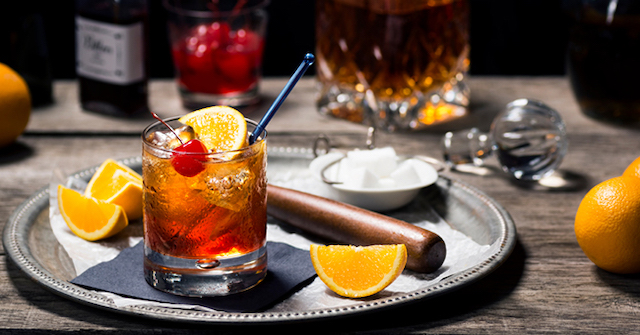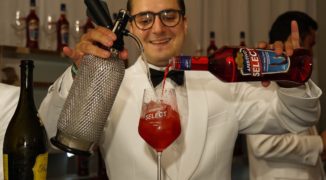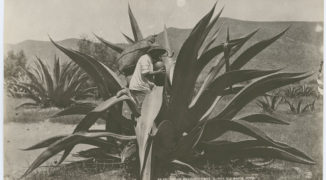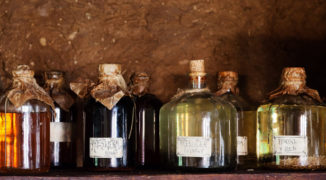The swizzle stick grew up on a tree in the Caribbean, spent its formative years in the Queen’s champagne and finally settled into a profitable life in marketing during the post-Prohibition cocktail heyday. Now, it stays active in its retirement years with a triple life as custom marketing tool, drink stirrer and cool collectible. But the true swizzle stick is no plastic ad speared onto an olive: it’s a piece of a tree, transformed into nature’s blender.
First, there was switchel — a molasses and water drink common in slave-holding portions of the New World — then there was the swizzle, the generally rum-based cocktail most bartenders are familiar with today. Somewhere between the two, the practice of using a branch of the Quararibea turbinate to stir the drinks began: the original swizzle stick. The branches of the tree — known as the swizzlestick tree — end in little fingers, radiating out from the end.
The word swizzle, according to the 1891 “Century Dictionary: An Encylopedic Lexicon of the English Language,” comes from a combination of the words swill and guzzle. Other origins claim the word marries switchel, that early beverage, and fizz. The first print mention of the swizzle comes in 1788 (“A Classical Dictionary of Vulgar Tongue”), but the stick seems to have pre-dated that by at least a century, traced back to origins with slaves arriving in the West Indies from Africa. Unlike other categories of cocktail, the swizzle earns its name not by ingredients or flavors, but by the whisk-like motion of making it — swizzling.
“Stirred briskly with a swizzle-stick, rubbed rapidly between the hands,” describes Annie Brassey in 1885, of finding the tool in use in Trinidad (“In the Trades, the Tropics, & the Roaring Forties”). Like the taxonomical designation, she realized that the key to her cocktail was the motion, declaring, “[The] process is half the battle of the success of the compound,” and mentioning her intention to bring back to England the special sticks in order to recreate the drink.
She was not the only one: eventually, both the drink and the stick migrated back to the homeland from the British colonies, and by the early 1920s, the swizzle stick had found a new purpose. Queen Victoria and the other refined women of her era used the sticks — or glass and plastic imitations of them — to stir the bubbles out of their Champagne, thus preventing any rather unladylike emissions of air later on.
Finally, the stick entered its modern era when inventor Jay Sindler needed a way to remove the olive from his martini without using his fingers. That 1933 occurrence just happened to coincide with both the easier manufacturing of small plastic sticks and the need for bars — no longer secretive speakeasies — to find new manners of promotion. With one swift stir, Sindler’s not-so-new invention solved two problems at once.
Today, the custom swizzle stick has faded as an everyday promotional item — perhaps made obsolete by the internet or just printed napkins — but it remains popular in two forms. The first is as collectible: the International Association of Swizzle Stick Collectors is an actual thing that exists; if this article has stirred something in you (pun intended), you can attend their 2017 conference in Las Vegas. The second swizzle stick boost comes from the resurgence of tiki bars, which brings opportunity for exciting shapes and sizes to fit themed drinks. Most cocktail bars these days aren’t offering the collectible promotional swizzle sticks of yore, nor are they using the original and authentic branch of the Caribbean tree. But don’t count the swizzle stick out quite yet.
In cocktails and in life, everything is cyclical. After a deep dive into the trend of speakeasies and Prohibition-style bars, perhaps next we’ll exit into the post-World War II-era with retro graphic-ed, plastic swizzle sticks at every bar. Or, hopefully, we’ll go further back and all start stirring drinks with forked branches — in a 2012 article for “Bar Life,” Stephanie Holt suggested that the tip of a pine tree could be used to the same end. You never know: there’s already a company in Brooklyn (of course) producing the beverage from which this all originated: switchel.





